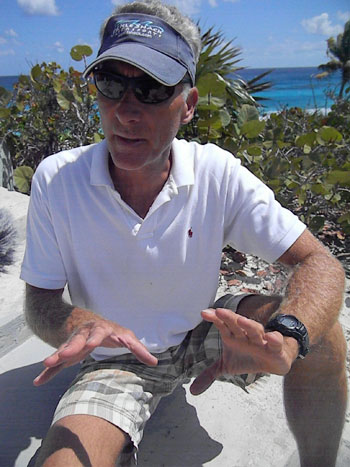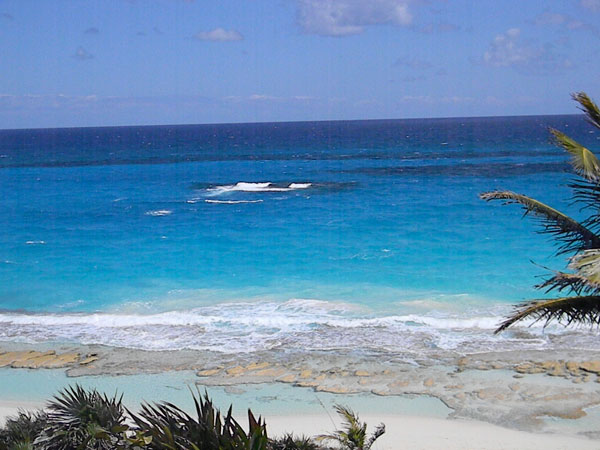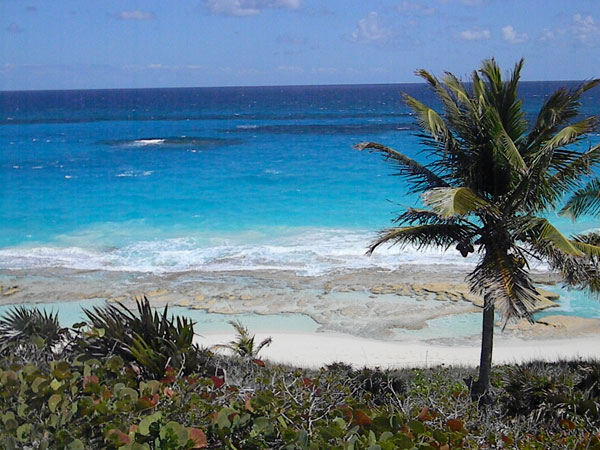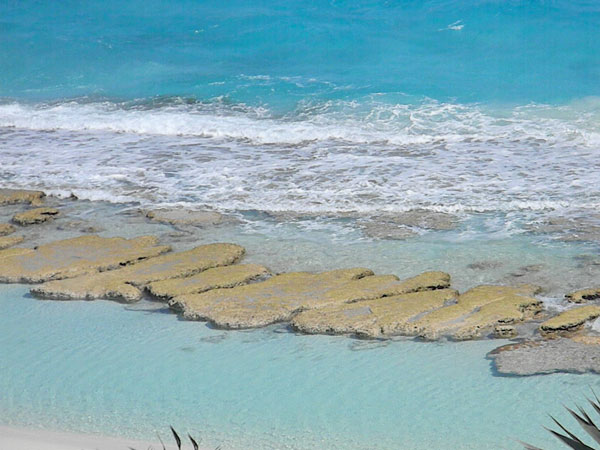|
From:TheBahamasWeekly.com Bahamas Information Services Updates
Stromatolites played a valuable role in the development of the planet’s atmosphere and are still alive and visible along Exuma Sound and the five-mile barrier island that forms Elizabeth Harbour. “Right along the beach on the north side of the island which is Exuma Sound are visible stromatolites and they are a very ancient form of life. They are single celled organisms called prokaryote cells,” said Robert Cronin, owner of Kevalli House on Lee Stocking Island, Exuma. “These cells are responsible for having to put the oxygen in the atmosphere about three and a half billion years ago, as the planet was being formed. Now, they are very rare and are only seen here behind this property, a little further up throughout the Exumas, particularly behind Lee Stocking Island and I think there might be some on the outside of Highbourne Cay and also Western Australia. They are still alive and are being measured for their growth by some people at the University of Miami.”
Researchers like Pam Reed from the University of Miami have been studying the growth patterns of prokaryote cells, which are microscopic prehistoric life forms, living with its own bacteria. They appear to be an organic zygote that has no nucleus with a membrane or organs, forming bacterium colonies known as Stromatolites. These colonies are still releasing large amounts of oxygen to the atmosphere. Stromatolites are calcareous layers of lime-secreting bacteria, trapped with sand and sediment. They are alive and growing like coral reefs, which are another more complex marine animal formation.
The Exumian Stromatolites are found in Precambrian rocks that extend from the origin of the Earth, at least 4,600 million years ago. They are the earliest known fossils still being formed today that lived for over eons of time. “They are rare, still alive and visible on the beach. I think it’s a great opportunity to showcase a natural resource that exists here in The Bahamas. Maybe we wouldn’t be here today if they hadn’t done the job they did and that they are apparently still doing because they are alive and they continue to grow,” said Mr. Cronin. Elizabeth Harbour also has an attraction for adventurous divers whom want to explore its blue-hole known as Angelfish. It is on the bottom of a lagoon cleaning hole connected underwater to all the other blue-holes in The Bahamas.
Researchers discovered these are natural geology formations in the environment that have also been studied by the National Geographic Society, in the Abacos and Andros. They are looking for a presence of unknown life and discovered sponges living in there that have antibacterial properties. “It’s about 30 feet from the surface of the water to the rim of this opening and you can descend through the opening to a further depth of about 60 feet below the bottom or 100 feet below the surface where there’s a large chamber,” said Mr. Cronin. “Some of the dive excursions in this area particularly Dive Exuma take divers in there for recreational dives, which I guess is a really fascinating thing to do. That blue-hole is connected through a tunnel system that runs underneath Stocking Island and appears or discharges or collects water off shore a couple of miles.” The Cousteau Society inserted some die into the Angelfish Blue-hole and that die appeared a couple of miles offshore. They were able to spot it with their helicopter and recognise this is part of the blue-holes that exist throughout The Bahamas. Another one a few miles away called Mystery Cave is more of a vertical cave, closer to the surface of the water, about 12 to 15 feet below the surface. It runs in a different direction across Stocking Island and divers can access it through two areas. Robert Cronin has lived here for the last six years in an off the grid, solar-powered, virtually zero carbon footprint environment on Lee Stocking Island. He considers himself to be an environmentalist and puts his beliefs into daily practice. He said what drew him to Exuma was its beautiful water, clean air, and great people.
|



